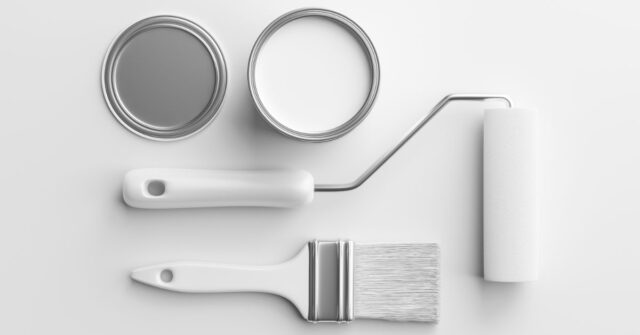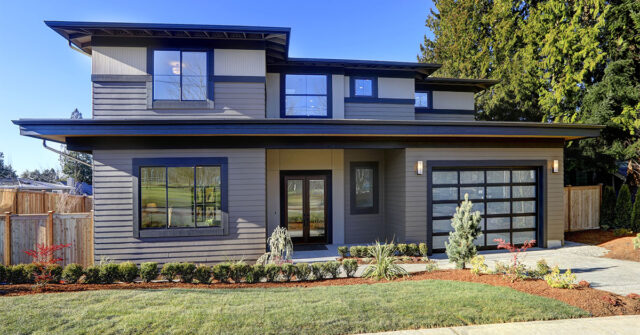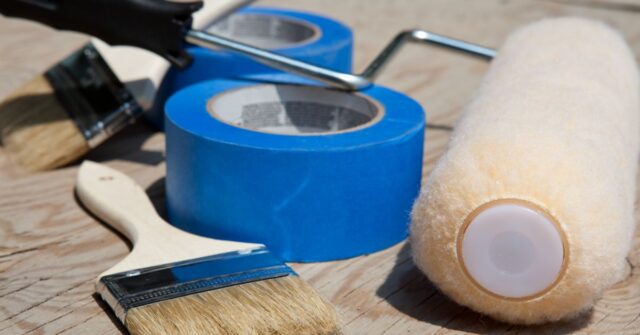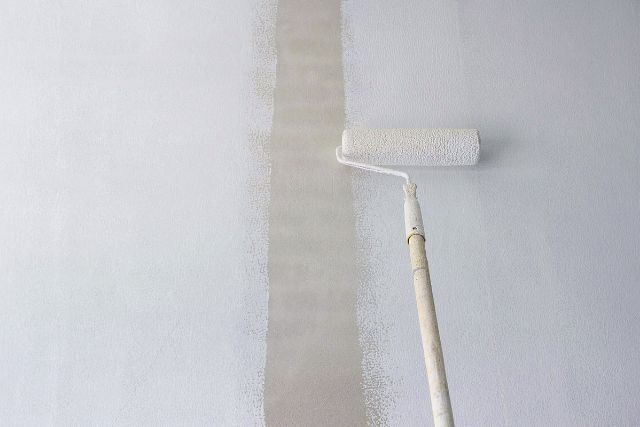Painting can be a transformative experience for any space, but it comes with the anticipation of waiting for the paint to dry.
Understanding the drying process and the factors that influence it is essential for a successful painting project.
In this comprehensive guide, we’ll explore everything you need to know about paint drying times, specifically tailored for Australians.
Introduction
In this comprehensive guide, we explore the factors that influence paint drying times, with a focus on common scenarios faced by Australians.
Whether you’re a DIY enthusiast or a professional painter, understanding how long it takes for paint to dry is crucial for a successful painting project.


The Importance of Proper Drying Time
Allowing paint to dry properly is crucial for achieving a durable and aesthetically pleasing finish.
When paint is given adequate time to dry, it adheres well to the surface, providing longevity and resistance to wear and tear.
Rushing this process can lead to issues such as smudging, peeling, or an uneven finish.
Factors Influencing Paint Drying Time
Several factors can influence how quickly or slowly paint dries, including the type of paint used, the conditions of the environment, and the surface to which it is applied.
Understanding these factors can help you plan your painting project effectively, ensuring optimal results.
Understanding Paint
There are various types of paint, each with unique properties and drying times. In this section, we’ll delve into the most common types of paint and discuss how their components influence the drying process.
Different Types of Paint
There are various types of paint available on the market, each with its own set of characteristics and drying times.
Water-Based Paints
Water-based paints, also known as latex paints, are popular for their ease of use and quick drying times, typically taking about 2-4 hours to touch dry.
They are environmentally friendly and easy to clean up with soap and water.
Oil-Based Paints
Oil-based paints offer a durable finish and richer colours, but they have longer drying times, usually taking about 6-8 hours to touch dry and up to 24 hours to fully cure.
They require turpentine or mineral spirits for cleanup.
Enamel Paint
Enamel paint, often used for its hard and glossy finish, can be either water-based or oil-based. The drying time varies depending on the type, but it generally takes longer to dry compared to other finishes.


Components of Paint
Paint is made up of several key components, each playing a role in the drying process.
Pigments
Pigments provide colour to the paint and can affect the drying time depending on their composition.
Binders
Binders hold the pigment particles together and help the paint adhere to the surface. They play a significant role in the drying time of the paint.
Solvents
Solvents keep the paint in a liquid form for application and evaporate as the paint dries. Water-based paints have water as a solvent, while oil-based paints use organic solvents.
Additives
Additives enhance certain properties of the paint, such as its durability or resistance to mould. They can also influence the drying time.
Factors Affecting Paint Drying Time
Temperature and humidity are critical factors in the paint drying process.
In this section, we’ll explore how these climatic conditions, along with other factors like the thickness of the paint application and the type of surface material, can influence the time it takes for paint to dry.
Temperature and Humidity
The climate plays a significant role in paint drying times, with temperature and humidity being key factors.


Optimal Conditions for Paint Drying
The ideal conditions for painting are temperatures between 10°C and 30°C with a humidity level below 85%. These conditions help ensure a consistent and quicker drying process.
How Weather in Australia Can Affect Paint Drying
Australia’s diverse climate means that weather conditions can vary significantly across the country.
In hotter regions, the paint may dry too quickly, leading to an uneven finish, while in more humid areas, drying times may be prolonged.
Thickness of Paint Application
The thickness of the paint layer also affects drying time. Thicker layers take longer to dry, while thinner layers dry more quickly. Ensuring an even application can help achieve consistent drying.
Surface Material
The material of the surface to which the paint is applied can influence drying times.
Wood
Paint applied to wood can take longer to dry, especially if the wood is not properly primed or if it is damp.
Metal
Metal surfaces tend to allow for quicker drying times, though this can depend on the type of paint used.
Drywall
Drywall is a common surface for painting, and it generally allows for average drying times. Proper preparation is key for optimal results.
Ventilation
Good ventilation helps to speed up the drying process by allowing solvents to evaporate more quickly. Ensuring adequate airflow in the painting area is important, especially when using oil-based paints.
General Guidelines for Paint Drying Times
This section provides an overview of the general timelines associated with different types of paints and drying stages.
Keep in mind that these are approximate durations and can vary based on specific conditions and paint formulas.


Water-Based Paints
Water-based paints typically take 2-4 hours to touch dry and up to 24 hours to fully cure. However, these times can vary based on the factors discussed earlier.
Oil-Based Paints
Oil-based paints generally take longer to dry, with 6-8 hours needed to touch dry and up to 7 days for full curing. The wait is often worth it for the durability and finish provided.
Enamel Paint
The drying time for enamel paint varies, but it generally takes longer than other types of paint. It’s important to follow the manufacturer’s recommendations for optimal results.
Practical Tips for Faster Paint Drying
Applying paint correctly and ensuring it dries properly is essential for a long-lasting finish.
In this section, we will provide practical tips and strategies to help speed up the paint drying process, ensuring a smooth and durable finish.
Proper Preparation of the Surface
Ensuring the surface is clean, dry, and properly primed can significantly impact the drying time and final result of your paint job.
Using the Right Tools
Using high-quality brushes or rollers and the correct type of paint for your surface can help achieve an even application, contributing to consistent drying times.


Applying the Correct Paint Thickness
Avoiding overly thick or thin layers of paint is key. Follow the manufacturer’s guidelines for application to ensure optimal drying times.
Enhancing Ventilation
Improving airflow in the painting area can help solvents evaporate more quickly, speeding up the drying process. Ensure the area is well-ventilated, especially when using oil-based paints.
Common Mistakes to Avoid
Even with the best planning, painting projects can sometimes go awry.
Here, we’ll discuss common mistakes to avoid during the painting process, ensuring that your project runs smoothly from start to finish.
Impatience and Touching the Paint
It can be tempting to touch the paint to see if it is dry, but this can leave fingerprints or smudges. Be patient and allow the paint ample time to dry.
Applying a Second Coat Too Soon
Waiting for the first coat to fully dry before applying a second is crucial for a smooth and durable finish. Rushing this process can lead to an uneven surface and longer overall drying times.
Neglecting the Effect of Weather
Weather conditions, especially in Australia, can have a significant impact on paint drying times. Be mindful of the climate and plan your painting project accordingly.
Conclusion
In this section, we’ll revisit the key points discussed in this guide, providing a concise summary and final recommendations to ensure your painting project is a success.
Recap of Key Points
We’ve covered the various factors that influence paint drying times, including the type of paint, environmental conditions, and surface material.
Following the guidelines and tips provided can help ensure a successful painting project with optimal drying times.


Final Thoughts and Recommendations
Understanding the drying process and planning your painting project with these factors in mind is essential.
Take the time to prepare the surface properly, choose the right paint, and be mindful of the conditions to achieve the best results.
FAQs
Painting can sometimes raise unexpected questions. In this section, we address some of the most frequently asked questions about paint drying times, providing clear and helpful answers.
How Can I Tell if the Paint is Completely Dry?
Touching the paint gently in an inconspicuous area is one way to test if it is dry. The paint should feel solid and not tacky. Refer to the manufacturer’s guidelines for recommended drying times.
Is it Safe to Paint Indoors During Winter?
Yes, it is safe to paint indoors during Winter but keep in mind that lower temperatures and reduced ventilation can prolong drying times.
Ensure the space is adequately heated and ventilated for the best results.
What Happens if It Rains After I’ve Painted?
If you are painting outdoors and it rains before the paint has had a chance to dry, it could cause the paint to run or smudge.
It’s important to check the weather forecast before starting an outdoor painting project and to provide adequate cover if there’s a chance of rain.





